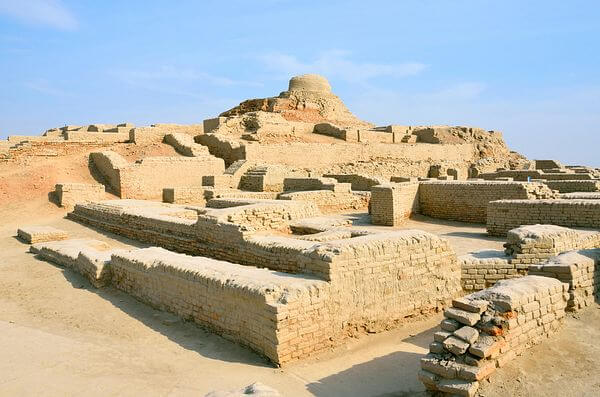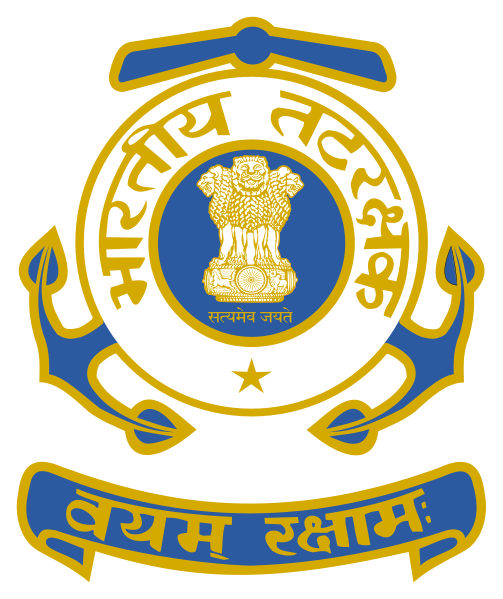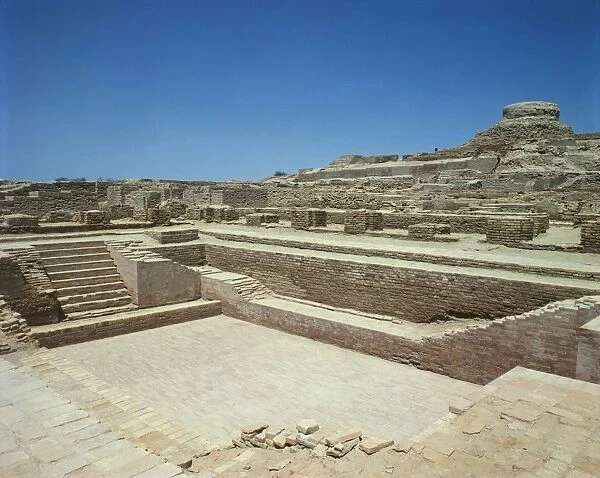Table of Contents
The Administration of Harappan Civilization is a testament to ancient ingenuity and organizational prowess. Spanning the years 3300 to 1300 BCE, this civilization set the stage for advanced urban living and sophisticated administrative systems that still intrigue historians and archaeologists today. Understanding the administration of the Harappan Civilization offers a glimpse into how they achieved such remarkable feats in urban planning, resource management, and social organization.
Centralized Governance – Administration of Harappan Civilization

Characteristics of Centralized Governance
The Harappan Civilization exhibited a highly centralized system of governance. Evidence suggests that the civilization was governed by a complex bureaucracy that ensured efficient management and distribution of resources. This centralized authority is reflected in the uniformity of city layouts, standardized measurements, and coordinated public works.
Evidence of Bureaucracy of Administration of Harappan Civilization
The presence of well-planned cities like Harappa and Mohenjo-Daro indicates a strong central authority capable of organizing large-scale construction and public works. The uniformity in urban planning across different cities points to a bureaucratic system that maintained control and oversight over various aspects of daily life.
Urban Planning and Infrastructure As Administration of Harappan Civilization
Grid-Like City Layouts
One of the hallmarks of Harappan administration was its emphasis on urban planning and infrastructure. Cities were meticulously planned with a grid-like pattern, featuring wide streets that facilitated movement and trade. This organized layout required detailed planning and centralized control.
Drainage Systems and Uniform Building Standards
Sophisticated drainage systems were a standout feature of Harappan cities, with covered drains running along major streets and connected to individual houses. The use of uniform building materials and standardized brick sizes further points to an advanced level of administrative oversight and regulation.
Standardization and Trade of Administration of Harappan Civilization
Standardized Weights, Measures, and Brick Sizes
The Harappan Civilization is noted for its standardization in weights, measures, and brick sizes. This standardization facilitated trade, both within the civilization and with distant regions such as Mesopotamia. The consistency in production and the existence of standardized trade goods indicate a regulatory body that maintained consistency across the civilization.
Trade Networks with Distant Regions Administration of Harappan Civilization
Evidence of Harappan trade includes the discovery of Harappan seals in Mesopotamia and other distant regions. This suggests a well-established network of trade routes that were likely regulated and facilitated by a centralized administrative system.
Administrative Centers and Seals
Citadels as Administrative Hubs
The major cities of the Harappan Civilization featured elevated areas known as citadels, which served as administrative and possibly ceremonial centers. These citadels housed important structures such as granaries, warehouses, and possibly the residences of elite officials, indicating their role in the administration and storage of surplus produce.
Use of Seals in Administration
The Harappans used seals extensively, which likely played a crucial role in administration and trade. These seals, typically made of steatite, bore inscriptions in the undeciphered Harappan script and various animal motifs. They were used to stamp goods, signifying ownership or quality control, and possibly functioned as identification markers for officials and merchants.
Social Structure and Governance
Hierarchy and Social Stratification
The Harappan society exhibited a hierarchical structure, with evidence suggesting a division between the elite and common citizens. The existence of large, well-constructed houses in the citadels contrasts with smaller, more modest homes in the lower city, indicating social stratification. The elite likely played a significant role in administration, governance, and religious activities.
Role of the Priest-King
Artifacts such as the “Priest-King” statue suggest the presence of a ruling class that combined both religious and administrative functions. This figure, with its elaborate attire and dignified pose, embodies the dual role of spiritual and temporal leadership, which was central to Harappan governance.
Economic Administration
Agriculture and Resource Management
Agriculture was the backbone of the Harappan economy, with the administration playing a crucial role in the management of agricultural resources. The extensive network of canals and reservoirs indicates a sophisticated system for water management, essential for sustaining agricultural productivity in the semi-arid environment of the Indus Valley.
Craft Production and Industry
The Harappan Civilization was also known for its craft production, including bead-making, pottery, and metallurgy. The uniformity and high quality of Harappan crafts suggest centralized control and standardization, indicating an administrative system that regulated production and ensured the distribution of goods.
Military and Defense
Fortifications and Defense Mechanisms
While there is limited evidence of warfare, the Harappans did construct defensive structures such as walls and fortifications around their cities. These structures, including the massive walls of Mohenjo-Daro, suggest that the administration took measures to protect the populace and maintain order within the civilization.
Role of the Military in Administration
The role of the military in Harappan administration remains speculative due to the paucity of direct evidence. However, the presence of fortified cities indicates a need for organized defense, likely managed by a segment of the administration tasked with maintaining security and order.
Religion and Administration
Religious Influence on Governance
Religion played an integral role in Harappan administration. The intertwining of religious and administrative duties is evident from artifacts and the layout of cities, where religious structures often occupied central positions. The likely dual role of priest-kings underscores the importance of religion in legitimizing administrative authority.
Public Works and Religious Structures
The construction of large public baths, such as the Great Bath of Mohenjo-Daro, indicates state-sponsored public works with religious significance. These structures not only served ritual purposes but also demonstrated the administrative capacity to mobilize resources and labor for communal benefits.
Conclusion
The administration of the Harappan Civilization was characterized by a high degree of centralization, efficient urban planning, and a sophisticated system of resource management. Through the integration of religious, economic, and social functions, the Harappan administrators created a stable and prosperous society that remains one of the most remarkable achievements of the ancient world.
FAQs
Q.1 What was the role of the Priest-King in Harappan society?
Ans. The Priest-King likely held both religious and administrative authority, embodying the dual roles of spiritual and temporal leadership.
Q.2 How did the Harappans manage their urban planning?
Ans. Harappan cities were meticulously planned with a grid-like pattern, featuring advanced drainage systems and uniform building standards, indicating centralized administrative control.
Q.3 What evidence exists of Harappan trade with other regions?
Ans. Harappan seals found in Mesopotamia and other regions indicate a well-established network of trade routes regulated by a centralized administration.
Q.4 How did religion influence Harappan administration?
Ans. Religion played a central role in Harappan governance, with religious structures often located in central city areas and priest-kings likely holding significant administrative power.
Q.5 What were the primary industries in the Harappan economy?
Ans. Key industries included agriculture, bead-making, pottery, and metallurgy, all of which were regulated and standardized by the administrative system.





Leave a Reply